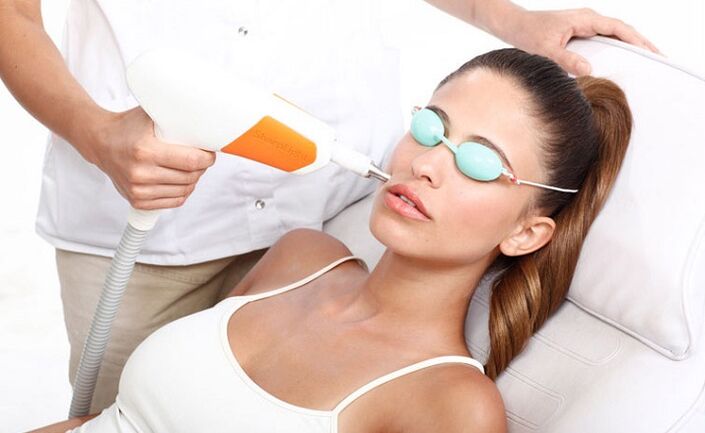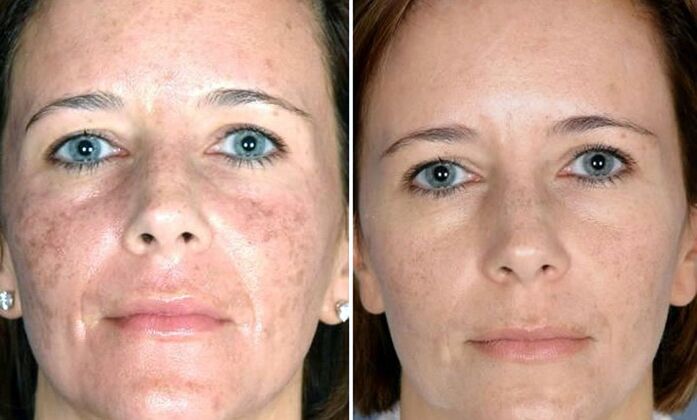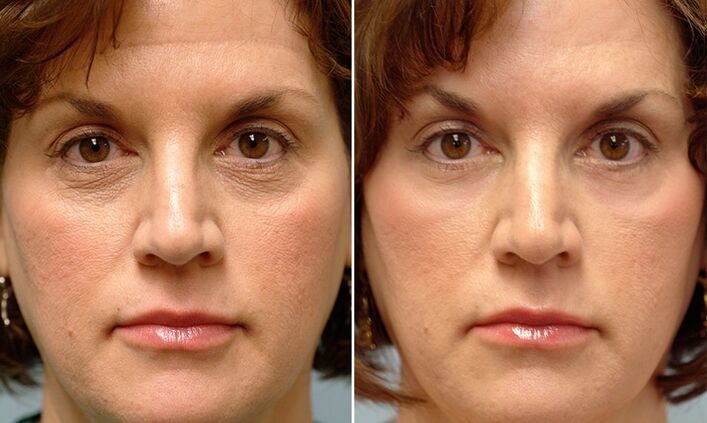From the time of Cleopatra until today there is not a single representative of the fair sex who does not want to prolong the youth and beauty of their skin. Modern medicine continues to surprise with innovations in the field of cosmetology, which offers various anti-aging surgeries and procedures.
Particularly popular are the techniques that allow you to get rid of the outward signs of aging without resorting to a scalpel or botox injections. Fractional laser rejuvenation is currently practically the fastest and safest way to counteract skin aging.

What is a fractional laser and how does it "taper"?
When the laser hits the skin, a burn occurs that spreads deeper. Active healing processes (regeneration processes) begin, which achieve the desired cosmetic effect. This procedure is also known as laser skin resurfacing in cosmetics.
When the same laser is divided into many microbeams, the so-called fractionated laser beam is obtained. Such a beam no longer acts as a whole point on the skin, but as an intermittent microgrid. Burns after fractional laser thermolysis are in the form of a large number of microdots on intact skin. This greatly reduces the trauma (and pain) of the procedure and allows the skin to recover faster.
After contact with the laser, intact, healthy skin cells begin to actively divide, forming collagen and elastin, which make the skin elastic and look youthful.
Types of fractional photothermolysis
ablative
When exposed to laser radiation, water evaporates from the tissues and an "open" microscopic wound is formed around which damaged (burned) cells are located.
In the course of healing, a pronounced lifting effect occurs, but there is a risk that an infection will penetrate into the deep layers of the skin.
Not ablative
Radiation is used that leaves the epidermis intact so that there is no evaporation from the tissue and no "open" wound. The burn forms and heals under the epidermis, so there is no risk of infection, but the rejuvenating effect of this procedure is less pronounced.
The beautician individually selects the method of fractional rejuvenation depending on the condition and skin type.
Effects and benefits of fractional laser thermolysis
The main difference between the technique and all other procedures is the optimal balance between safety and effectiveness.
Main advantages:
- the ability to affect any part of the body (including the cleavage, neck, eyelids);
- a wide range of indications;
- Physiology (the area of damage is only 20% of the total area treated with a laser);
- short healing time (2-7 days);
- Anesthesia method - application;
- the possibility of its use in people with dark skin (as it does not cause hyperpigmentation);
- the duration of the result (from one year to several years).
The downside is insufficient knowledge of all aspects of the action of a fractional laser, as the technology itself has recently emerged.
Indications for fractional rejuvenation:
- Wrinkles (of any depth and place);
- Decrease in the elastic properties of the skin;
- enlarged pores;
- Pigmentation;
- Acne;
- Spider veins;
- Scars (postoperative, rest after acne);
- Stretch marks (striae), also on the skin of the mammary glands.
Features of conductive fractional laser thermolysis
A few days before the photothermolysis procedure, the beautician (if indicated) may prescribe antibacterial or antiviral drugs in prophylactic doses.
On the day of fractional rejuvenation, it is necessary to completely exclude physical activity, smoking and alcohol consumption.
Before the procedure, the skin is thoroughly cleaned and treated with a special anesthetic cream. In some cases, anesthesia is not required at all.
The effect of the laser is felt as "tingling" or "tingling". The duration of the procedure (from a few minutes to an hour) and their number are selected individually. After the laser treatment, a soothing care cream is applied to the skin.
Aftercare of the skin:
- Moisturize the skin 2-3 times a day (within 2 weeks) with a special cream.
- Protect the skin from UV radiation for 2 months (do not visit the solarium, use sunscreen with a protection factor of at least 30);
- Do not use scrubs and scrubs (within 2 weeks).
- Do not use cosmetics that contain salicylic acid and retinol (within 2 weeks).
- Do not wear compression underwear for several days (if the body has been subjected to fractional photothermolysis).
- Limit (exclude) smoking and alcohol during the entire course of treatment (reduce the skin's regenerative functions).

On average, the rehabilitation period lasts up to 3 days after non-ablative fractional laser thermolysis and up to 7 days after ablative thermolysis.
Skin changes after the procedure
Redness, discomfort and slight swelling of the skin may persist for 1-3 days after intensive laser exposure. If this condition is subjectively poorly tolerated, it is permissible to use pain relievers and skin cooling.

After a few days, a bronze-colored skin tone (tanning effect) can appear, which lasts for up to 2 weeks and disappears by itself. Within 5-7 days of fractional rejuvenation, dryness and peeling of the skin are noted.
Adverse consequences and contraindications for photothermolysis
In the event of improper skin care after the procedure, non-compliance with recommendations or technical errors during laser treatment, the following complications are possible:
- Reddening of the skin for more than 3 days;
- Edema at the site of exposure lasting more than 2 days;
- Worsening of the herpes infection (if it was previously in the treatment area);
- Infection (appearance of streptoderma);
- Erosion, burns in the affected area;
- precise bleeding;
- Hyperpigmentation.
In order to avoid undesirable consequences, the procedure of fractional laser rejuvenation is carried out after examination and exclusion of possible contraindications.
Absolute contraindications:
- Pregnancy and breast feeding period;
- Tendency to form keloid scars;
- acute infectious process (including herpes);
- oncological pathology;
- Condition after radiation, chemotherapy;
- Epilepsy;
- significant disorders of the immune system;
- Taking medications that contain retinoids;
- Psoriasis (atopic dermatitis) during an exacerbation.
Relative:
- Renal pathology;
- Diabetes mellitus;
- Inflammation at the exposure site;
- the unwillingness of the patient to follow the recommendations of the beautician;
- Mental illness;
- Allergy to anesthetic;
- Autoimmune diseases;
- fresh tan (visit to the solarium in the last month);
- recent rejuvenation procedures (effects on the deep layers of the skin - within the last three months, superficial - within 10 days).
Reviews of fractional laser rejuvenation and photos of patients from the before and after series generally detracts from the effectiveness and low trauma of this youth preservation method.

Notice!The procedure can only be performed by professionals (surgeons or dermatovenerologists) who have been trained and have permission to work with laser equipment. The competence of a doctor is the key to your beauty!














































































